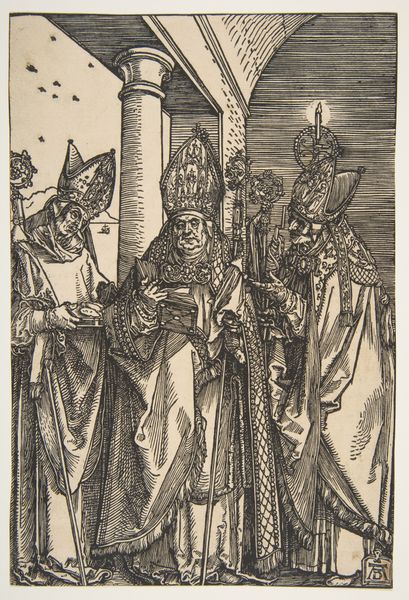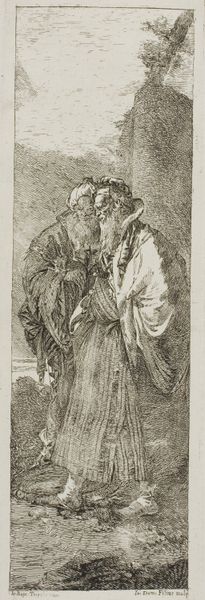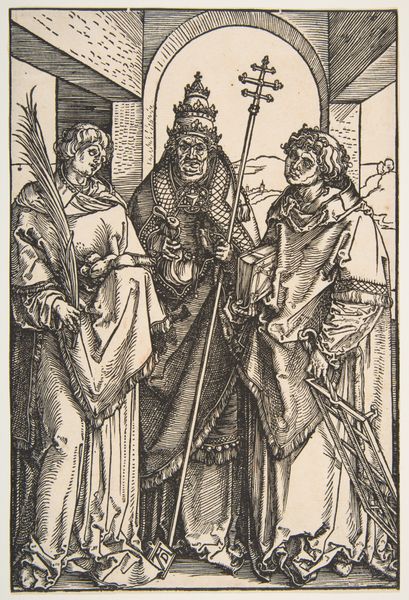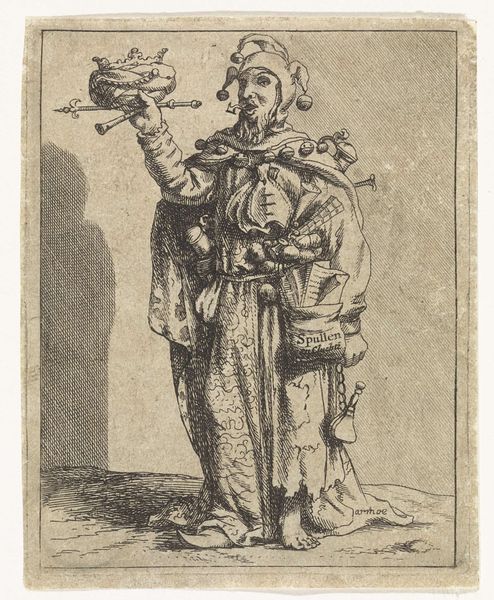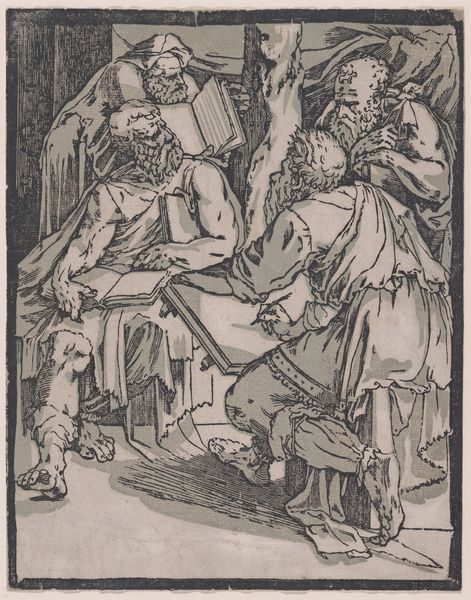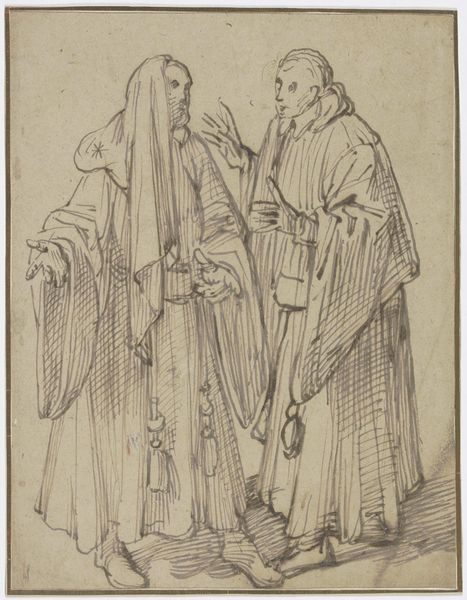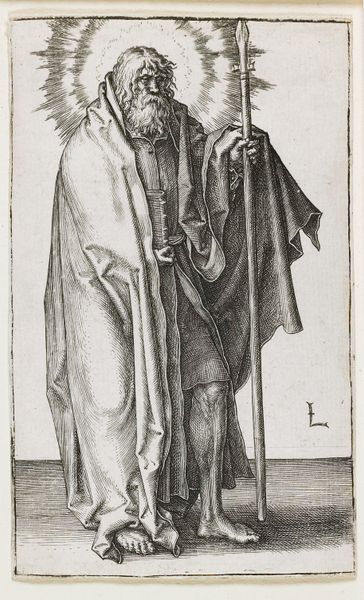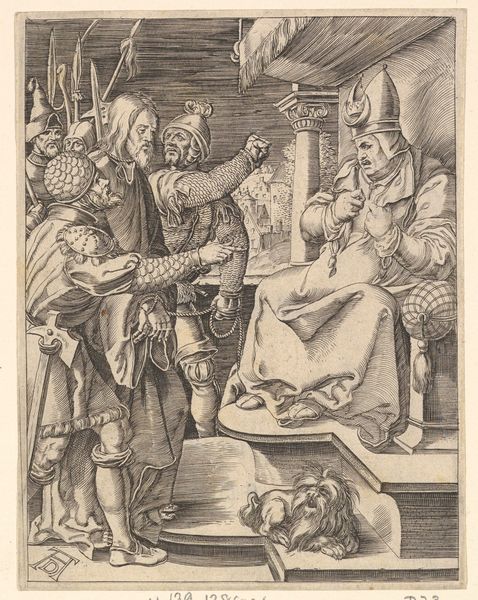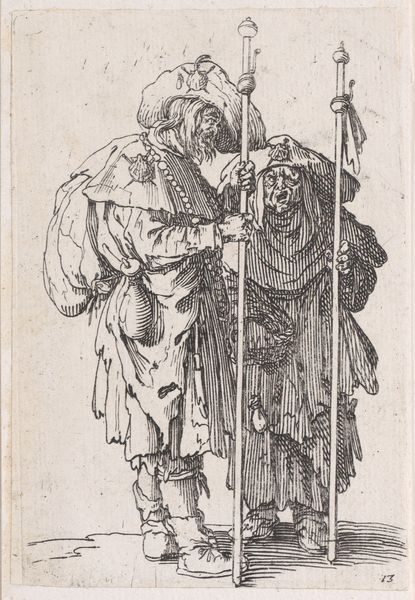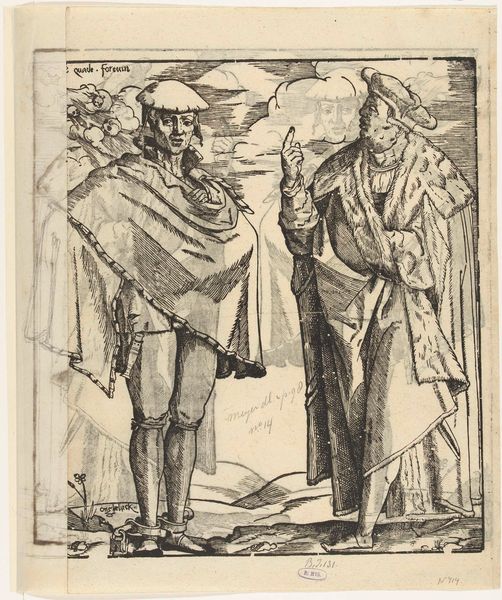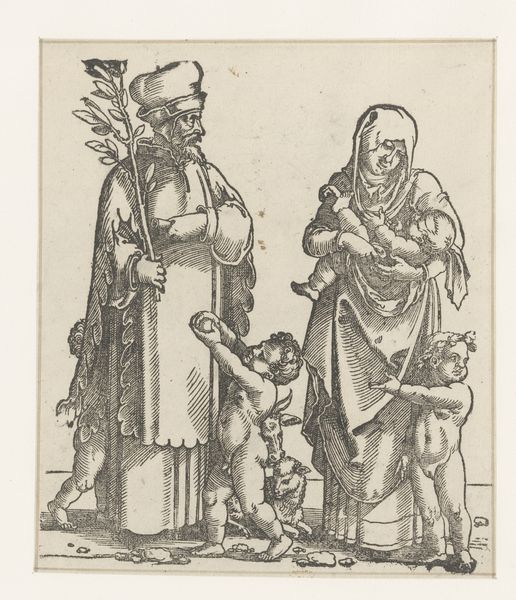
drawing, print, etching, engraving
#
drawing
#
ink drawing
#
medieval
# print
#
etching
#
caricature
#
mannerism
#
figuration
#
line
#
history-painting
#
engraving
Dimensions: Sheet: 8 x 5 in. (20.3 x 12.7 cm)
Copyright: Public Domain
Editor: This is "Satire on the Papacy" by Melchior Lorck, created around 1555, and it's currently housed at the Met. It’s an engraving, I believe, with incredibly fine lines. It feels almost nightmarish with these grotesque figures. What's your interpretation of this scene? Curator: Indeed, this piece reflects the turbulent times of the mid-16th century, during the Reformation. The artist uses satire to critique the power structures within the Papacy. Notice how the figures on the left are adorned with symbols of papal authority, but rendered in a monstrous way? Editor: I do see that. One figure has multiple faces, and what looks like an infant head? It's quite unsettling. Curator: Exactly. The multiple faces might suggest duplicity or conflicting agendas within the Church. And the baby, a symbol of innocence, appears lifeless, perhaps signifying the Church's betrayal of its fundamental principles. What impact do you think visual critiques like this had on public perception at the time? Editor: I can imagine something like this having quite an impact. It would be a way to sway public opinion, particularly among those who were already questioning the Church's authority. Were these kinds of images widespread? Curator: Yes, printmaking allowed for relatively easy reproduction and distribution, making these satires potent tools in the Reformation’s propaganda war. Consider where these were displayed and for whom these images were intended? It brings a new element to its power as a historical piece of work. Editor: Thinking about the politics behind art during that era definitely adds a whole other layer to appreciating this etching. Thanks for that. Curator: My pleasure. It highlights how art doesn’t exist in a vacuum; it’s a product of its time, deeply intertwined with the socio-political landscape.
Comments
No comments
Be the first to comment and join the conversation on the ultimate creative platform.
